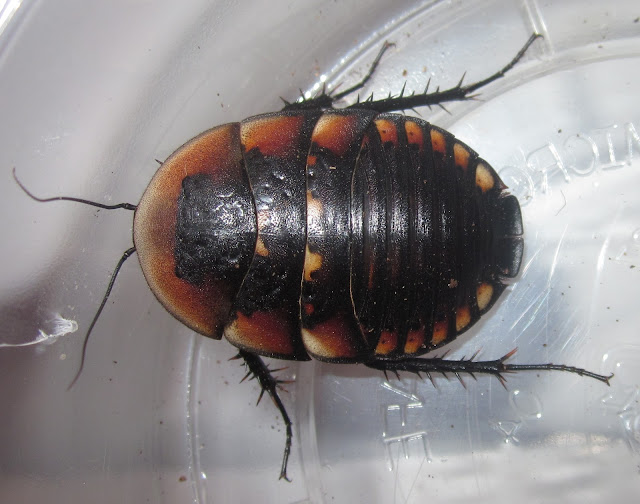Well I've got some interesting things to share regarding my Cubaris sp. "Blonde Ducky". I had some darker individuals pop up in my colony, not something I'd heard of happening with this particular species. When dark like this, they really look like sp. "Rubber Ducky", and it seems some people consider those and sp. "Blonde Ducky" to be the same.
However, IMO they differ noticeably in morphology, with sp. "Blonde Ducky" being more flat and having a wider skirt, whereas sp. "Rubber Ducky" are a bit skinnier and more cylindrical. Even more noticeable IMo is the different segment shapes between the two, particular of their last few "tail" segments. So I'm of the opinion that they are two distinct species, with unfortunately very similar sounding strain names (they even named the all orange/yellow morph of sp. "Rubber Ducky" "Blonde", and the intergrade between the wild type coloration and the orange/yellow morph "Blond-ish"... Why??? 😫). However, we won't know for sure until individuals are sent to a researcher and he can examine their morphology more closely, and preferably their genetic relationship as well.
Anyways, here are some pictures of my dark color form (DCF) sp. "Blonde Ducky", as well as comparison shots between these and sp. "Rubber Ducky":
 |
| Female sp. "Blonde Ducky - DCF" |
 |
| Male sp. "Blonde Ducky - DCF" |
 |
| Female & Male sp. "Blonde Ducky - DCF" |
 |
| Male sp. "Rubber Ducky - Blond-ish" |
 |
| Male sp. "Blonde Ducky - DCF" VS Male sp."Rubber Ducky" |
Definitely, these two are different species. And I might be the first to get dark individuals to pop up in their sp. "Blonde Ducky" colony? If not, I'll at least probably be the first to try and isolate for this coloration lol, I've got my dark individuals in their own setup now, and the female in these pictures is gravid, so I'll have babies soon! 🤞
Anyways, that's gonna do it for this post, thanks for reading, hope everyone enjoyed, stay safe, and I'll see you all next time! 😉































































